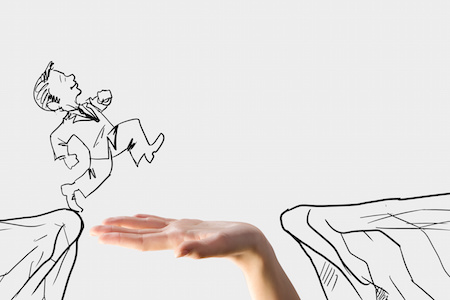Most of us do. (Note that I'm not asking if you exercise. I'm asking if you sit too long.) We sit when we’re working, eating, driving, travelling on public transport (if we’re lucky), on the toilet, relaxing at home and anywhere else we can sit instead of stand. In today’s modern society, we sit more than any other generation.
So what if we prefer to sit instead of stand or walk?
Dr. Jerry Morris was one of the first to study the effects of inactivity in 1949. Dr Morris found that the sedentary job of London’s bus drivers contributed to higher rates of cardiovascular disease compared to the bus conductors, who climbed up and down the stairs of the bus throughout the day.
Since then, there has been more and more research linking inactivity with poor health. Initially, it was thought that the ‘cure’ for inactivity was to exercise. Many governments and health authorities recommended 150 minutes of low-moderate intensity exercise per week.
This recommendation is well known across the globe, and as we become more health conscious, more people are starting to embrace exercise, whether it be yoga, pilates, gym, or group fitness classes. However, current research is telling us that lack of exercise is not the same as inactivity due to prolonged sitting, even if you are exercising 5 times a week. One study concluded that sitting for prolonged periods of time increases risk for heart disease, diabetes, cancer and death, even among people who exercise regularly. Simply put, regular workouts, with all its health benefits, do not entirely counteract the negative effects of sitting.
10,000 steps a day
Wearable technology is a great way to track physical activity.
So with advanced technology in the modern world, we are blessed with connectivity, convenience and entertainment. Now, with the arrival of wearable devices like the fit-bit, and smart-watches, the humble pedometer is once again, the in-thing. Though its accuracy could be questioned from time to time, and waving your hand at someone may count as 4 steps, it’s a fantastic way help us move away from inactivity.
Sadly though, there's a very common mistake I see people make, while hitting their 10,000 steps a day is last-minute-cramming. They were so busy throughout the day, that by mid-afternoon, they were only at 4,500 steps. So after work they decide to walk more. Maybe its by walking part of the way home, going window shopping, or even adding a little detour, just to hit (or get closer to) that magic number, ten thousand. By doing this, you will get some of the health benefits associated with low-intensity exercise (walking), but it also does not counteract the detrimental effects of sitting too much.
How’s sitting killing us?
Firstly, prolonged sitting decreases circulation. An accepted medical condition that is attributed to inactivity is deep venous thrombosis (DVT). DVT is a potentially fatal condition where blood clots develop in leg muscle veins during inactivity.
Secondly, animal studies have shown that inactivity shuts down our metabolic function. The enzyme that breaks down fats in your body, lipoprotein lipase (LPL), is affected by lack of activity. Altered LPL function results in numerous health implications including diabetes-induced dyslipidemia, coronary artery disease, hypertension, metabolic problems and syndromes.
Thirdly, prolonged sitting has been linked to increased risk of diabetes. Studies found a higher incidence of insulin resistance, and elevate 2-hour blood glucose levels as a result of inactivity.
Finally, sitting for extended periods of time impacts body composition. It is well documented that activity level effects our body composition, specifically fat percentage. A study in 2000 found that simply supporting the body and engaging in spontaneous movement raises whole-body energy expenditure around 2.5-fold above sitting (Levine et al., 2000). More recently studies in the last year found that prolonged sitting resulted in an increase in waist circumference and risk of obesity.
So what’s the next step?
Take the next step
There are many ways to circumvent the negative impact of our sitting habits. Here’s five you can try today.
- Change your mode of travel. Where possible, walk. That can be as simple as taking the stairs, or parking further away from your destination.
- Walk more. Take a stroll, whether to work, out for lunch or to the shops. Walking outdoors can add other addition benefits including fresh air (instead of recycled air-conditioned air) and sun exposure.
- Consider certain activities you can do while standing in the office. Nowadays, designers are creating task-based workstations, that allow you to work in different positions, depending on the task you are undertaking.
- Get a sit-stand desk. Standing expends more energy, and the subtle shifts of body weight and movements break up the prolonged sitting. If you must sit, you can rhythmically tense and relax the muscles of your legs from time-to-time.
- Take a break from the screen. Grab a cup of tea, go to the printer, or speak to your colleague instead of emailing them. One way to implement this is to set a timer to remind you get up every 20 or 30 minutes. Such activity has been shown to improve insulin and blood glucose metabolism (Dunstan et al., 2012).
There are numerous other ways by which to incorporate more activity into your life. A valuable resource for ideas on being healthy and active are outlined throughout the book The Pain-Free Desk Warrior, Free Yourself From Aches and Pains. Remember, there is no right or wrong. What ever you decide, just do it consistently.
For more information on sitting posture, desk exercises, and all the essentials for those stuck at a desk for more than 2 hours a day, download my free guide, which includes 50 Simple Ways to Reduce the Risk of Heart disease, Diabetes, Cancer and Body aches while in the office. Save your back and live a joyful quality life.




